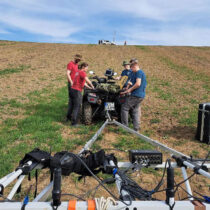Architecture is the art par excellence that combines aesthetic values and practicality. Bearing this in mind, R. Martin is justified in writing that “the objective is for one to make something useful in the best possible way, but is not this also the best way for one to achieve beauty?” Architecture, an art that creates prototypes, is indispensably connected with geometry and stereometry; it “invents” new spaces. Novelties in the field of architecture are affected by the technology of each era. The only theoretical work that has survived is that by Vitruvius of the 1st century BC. Along with archaeological evidence this is the source of information that comes down to us on building in the remote past. The main building material was supplied by the quarries, where slaves, convicts and free workers were employed. The technique used for the extraction of stones has changed considerably due to the employment of gun powder and the electric drill, although in certain remote locations the traditional methods have continued to be in use for centuries. When the quarry was close to the sea, the transportation of the building material was easily accomplished by boats, but when it was located high up on a mountain, a more complicated procedure was required. In the loading areas of the quarries and in the buildings under construction cranes and hoists were operated in skillful and interesting ways for loads to be attached. Soon after the building material had reached its destination, the actual building would begin.The foundation of the edifice, the connections of the stones and certain building systems. The Romans have greatly contributed to the progress of technology by inventing “Roman concrete” which allows the subordination of environment to architecture.
Building in antiquity
30 Jul 2012
by Archaeology Newsroom
- A
- A
- A

